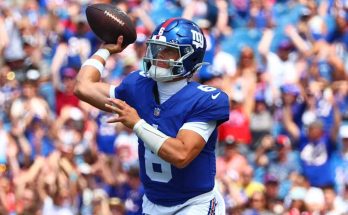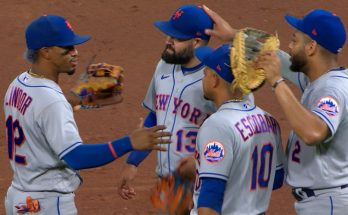The Indiana Pacers have made a strategic move by signing big man Isaiah Jackson to a three-year, \$21 million deal. The contract comes at a critical time for the franchise, which is undergoing a significant transition following the departure of longtime center Myles Turner. Jackson, just 23 years old, now steps into a larger role with the team, one that comes with both opportunity and pressure. His new deal represents not only a show of faith from the organization but also a calculated risk, given his recent Achilles injury. Still, the upside is clear—if Jackson can stay healthy and continue developing, he could become a major building block for the Pacers over the next several seasons.
Jackson was selected 22nd overall in the 2021 NBA Draft and was traded to Indiana on draft night. Since then, his career has been filled with flashes of promise. His blend of elite athleticism, rim protection, and defensive versatility has often turned heads, even in limited minutes. Prior to suffering a torn Achilles tendon early in the 2024–25 season, Jackson was averaging 7.0 points, 5.6 rebounds, and 1.6 blocks per game while shooting over 60% from the field. These numbers, while modest, underscore his efficiency and defensive impact, particularly when considering the limited playing time he had due to depth at the center position and previous health setbacks.
The Pacers’ decision to offer Jackson this contract came after extending a \$6.4 million qualifying offer, which made him a restricted free agent. The move allowed the Pacers to retain the right to match any outside offer, but ultimately the two sides agreed to terms before another team could make a serious bid. Importantly, the final structure of the contract includes performance and injury protections tied specifically to his Achilles, a smart hedge by Indiana’s front office given the physical demands of Jackson’s playing style and the nature of his injury. The final two years of the deal are partially protected, meaning that if Jackson suffers another significant Achilles issue or fails to meet games-played thresholds, Indiana has an exit strategy.
Despite the injury, the Pacers see Jackson as an integral part of their long-term plans. With Myles Turner now with the Milwaukee Bucks, Indiana has an opening in the starting lineup, and Jackson is the most likely candidate to fill that spot. While other players such as James Wiseman, Jay Huff, and Tony Bradley are also in the mix, none offer the same combination of athleticism, age, and system familiarity that Jackson brings. Coach Rick Carlisle has spoken glowingly about Jackson’s physical tools and defensive instincts, praising his ability to guard multiple positions, protect the rim, and run the floor. Carlisle has also noted Jackson’s improving offensive awareness and passing touch, though his perimeter shooting remains a work in progress.
Jackson’s development has been slower than some had hoped, but there is a widespread belief among team staff and analysts that he has yet to fully tap into his potential. Part of the challenge has been consistency—Jackson has struggled with injuries and uneven play—but when he’s healthy and confident, he has shown he can change the pace of a game with his energy and effort. Whether it’s grabbing tough rebounds, blocking shots, or finishing lobs in transition, Jackson brings an element of explosiveness that few players on the roster possess. His per-36-minute numbers are often impressive, and the next step in his growth is simply staying healthy enough to earn extended minutes and rhythm over a full season.
In the context of the modern NBA, Jackson’s profile is especially valuable. He’s mobile enough to switch onto guards in pick-and-roll situations, a trait that has become critical for big men in today’s perimeter-oriented game. At the same time, he offers traditional rim protection and rebounding that help anchor a defense. If he can add a respectable midrange jumper or even stretch his range to the three-point line, he could evolve into a true two-way big, the type that’s increasingly hard to find at an affordable price. For now, Indiana is betting that his defensive contributions alone justify the contract, with the potential for offensive growth acting as a bonus.
The timing of this deal is also important for Indiana’s overall roster strategy. The Pacers are still reeling from the Achilles injury sustained by star guard Tyrese Haliburton during the 2025 NBA Finals, an absence that will likely keep him off the court for most, if not all, of the upcoming season. Without Haliburton and Turner, the Pacers are entering a reset year of sorts, leaning heavily on their younger players and hoping to evaluate who can be part of the next competitive core. In that context, Jackson’s new deal is as much about stability as it is about growth. He provides a familiar face, a known quantity, and a player with a clear upside—all while remaining on a contract that doesn’t strain the cap.
Financially, the deal is considered team-friendly, especially if Jackson continues to develop. The average annual salary of \$7 million is relatively modest for a starting-caliber center, and the descending guarantees in the final two years provide Indiana with flexibility. If Jackson thrives, the Pacers will have a starting center on a bargain deal. If not, they can move on with limited financial consequences. This is increasingly the model for teams looking to balance upside and risk in a salary-capped league—reward young talent, but do so in a way that preserves future flexibility.
The fan reaction has largely been positive, with many supporters excited to see Jackson get a larger role. His highlights—high-flying dunks, chase-down blocks, and relentless hustle plays—have made him a fan favorite. There’s also a sense that this is the right time for Jackson to step up. The opportunity is there, the team believes in him, and the contract shows a level of mutual commitment. Now, it’s up to Jackson to make the most of it. His offseason training and rehabilitation have reportedly gone well, and he is expected to be fully cleared for training camp.
One important aspect of Jackson’s game that may take time to return post-injury is his vertical explosiveness. Achilles injuries are notorious for affecting a player’s lift, and for someone whose game relies so much on athleticism, regaining that edge is critical. However, recent medical advancements and successful recoveries by other NBA players suggest that a full return is possible. The Pacers’ medical staff will undoubtedly be monitoring his progress closely, and early indicators from team sources suggest optimism about his condition.
Looking ahead, Jackson’s role on the team could expand beyond just on-court production. As a fifth-year player now being paid like a key contributor, he’ll be expected to provide leadership and set an example for younger players. His work ethic, attitude, and resilience through injury have earned respect within the locker room, and that internal credibility could prove valuable as the team navigates a transitional year. The Pacers are clearly betting on more than just stats—they’re investing in Jackson’s potential as a long-term piece of their evolving identity.
If he succeeds in solidifying the starting center position, Jackson could find himself in line for another extension down the road, one that reflects a higher tier of production. But that scenario begins with a healthy, productive 2025–26 season. The minutes will be there. The opportunity is real. Whether he seizes it will depend on how quickly he adjusts to being a focal point of the frontcourt and how well his body holds up under the rigors of increased responsibility.
The contract also signals a broader shift in Indiana’s approach. By moving on from Turner and leaning into youth and upside, the Pacers are clearly focusing on building a sustainable, modern core around athleticism, switchability, and pace. Jackson fits that mold perfectly. He’s not yet a finished product, but the tools are all there. If the shooting comes along and the injury fades into the past, this deal could turn out to be a steal.
For now, it’s a moment of opportunity—for Jackson to define his career, for Indiana to redefine its frontcourt, and for the fans to rally behind a homegrown talent stepping into the spotlight. The next chapter begins at training camp, where Jackson will look to prove that he’s not just a project with potential, but a reliable, high-impact starter ready to anchor the Pacers for years to come.


